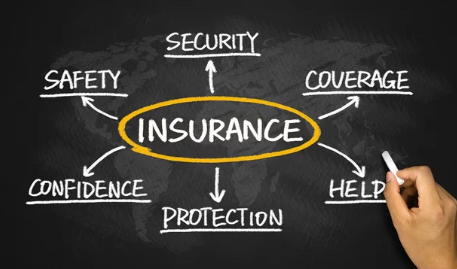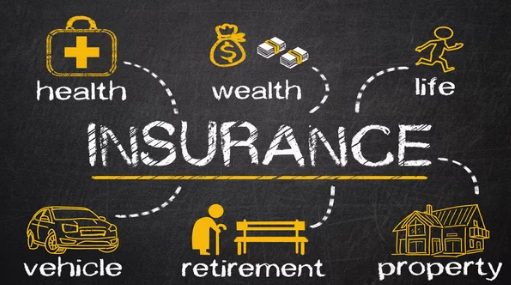Your home is more than just a building—it’s your safe haven, your investment, and the heart of your life. But what happens when the unexpected strikes? Fires, floods, theft, or even natural disasters can damage or destroy what took years to build. That’s where home insurance comes in.
Home insurance (also known as homeowners insurance) is your financial safety net, designed to protect your property and belongings from unforeseen events. Whether you’re a homeowner, renter, or landlord, understanding how home insurance works can save you from devastating financial loss.
This guide explains everything you need to know about home insurance—what it covers, what it doesn’t, and how to choose the right policy for your needs.
What Is Home Insurance?
Home insurance is a contract between you and an insurance company that provides financial protection for your home and personal property against covered risks or “perils.”
If your house is damaged or your belongings are stolen, your insurance policy helps pay for repairs, replacements, or even temporary housing.
In short, it ensures that when the unexpected happens, you’re not left to bear the financial burden alone.
Why You Need Home Insurance
Even if you’ve paid off your mortgage, having home insurance is essential. Here’s why:
- Protection Against Loss – Covers damage caused by fire, storms, vandalism, and more.
- Financial Security – Prevents you from paying massive repair or replacement costs out of pocket.
- Liability Coverage – Protects you if someone is injured on your property.
- Mortgage Requirement – Most lenders require home insurance to protect their investment.
- Peace of Mind – Knowing you’re covered allows you to focus on what truly matters—your home and family.
Types of Home Insurance Coverage
A standard home insurance policy typically includes several types of coverage. Each one plays a unique role in protecting you from different financial risks.
1. Dwelling Coverage
This covers damage to your home’s structure—walls, roof, floors, and built-in appliances—caused by covered events such as fire, hail, wind, or vandalism.
Example:
If a storm damages your roof, dwelling coverage pays for repairs.
2. Other Structures Coverage
This protects detached structures on your property, such as:
- Garages
- Sheds
- Fences
- Guesthouses
Usually, this coverage is about 10% of your total dwelling coverage.
3. Personal Property Coverage
This covers the contents of your home—furniture, electronics, clothing, and personal belongings—if they’re damaged, destroyed, or stolen.
Tip:
You can choose between Actual Cash Value (ACV) (value minus depreciation) or Replacement Cost Value (RCV) (full cost to replace the item).
4. Liability Protection
If someone is injured on your property or you accidentally damage someone else’s property, liability coverage pays for legal fees, medical bills, or settlements.
Example:
If a guest slips on your wet floor and sues, liability coverage helps with court costs and compensation.
5. Additional Living Expenses (ALE)
If your home becomes uninhabitable after a covered event, ALE pays for hotel stays, meals, and other temporary living expenses while repairs are underway.
Common Perils Covered by Home Insurance
Most standard home insurance policies (often called HO-3 policies) cover the following perils:
✅ Fire and smoke
✅ Theft or vandalism
✅ Lightning strikes
✅ Windstorms or hail
✅ Explosions
✅ Damage from falling objects
✅ Water damage from burst pipes
What’s Not Covered?
Home insurance doesn’t cover everything. Understanding the exclusions helps you avoid unpleasant surprises.
Common exclusions include:
❌ Floods and earthquakes (require separate policies)
❌ Routine wear and tear
❌ Pest infestations (like termites or rodents)
❌ Mold caused by neglect
❌ Damage from war or nuclear hazards
Tip: If you live in an area prone to floods or earthquakes, consider adding extra coverage or purchasing a separate policy for full protection.
How Home Insurance Premiums Are Calculated
Your premium (the amount you pay for insurance) depends on several factors, including:
- Location: Homes in disaster-prone or high-crime areas cost more to insure.
- Home Value & Rebuilding Cost: Larger or more expensive homes require higher coverage.
- Construction Materials: Fire-resistant materials may lower your premium.
- Security Systems: Installing alarms, cameras, or sprinklers can earn you discounts.
- Claims History: Frequent past claims can increase your premium.
- Deductible: Choosing a higher deductible lowers your monthly premium but increases out-of-pocket costs when filing a claim.
How to Choose the Right Home Insurance Policy
Selecting the right home insurance policy involves more than just comparing prices. Here’s what to consider:
- Assess Your Home’s Value – Ensure coverage matches your home’s rebuild cost, not its market value.
- Inventory Your Belongings – Make a list or photo log of valuables for accurate personal property coverage.
- Compare Policies and Providers – Look at coverage limits, exclusions, and customer service ratings.
- Ask About Discounts – Many insurers offer lower rates for bundling home and auto insurance.
- Review Annually – Life changes like renovations, new furniture, or home systems may require policy updates.
Home Insurance Add-Ons (Riders) You Should Know About
To customize your coverage, insurers offer optional add-ons or endorsements, such as:
- Flood Insurance: Covers damage from flooding (usually not in standard policies).
- Earthquake Insurance: Protects against quake-related damage.
- Sewer Backup Coverage: Pays for damage from drain or sump pump failures.
- Valuable Items Rider: Extra protection for jewelry, art, or collectibles.
- Home Business Coverage: If you run a business from home, this protects your equipment and liability.
Steps to File a Home Insurance Claim
If your home is damaged, follow these steps to file a claim efficiently:
- Contact Your Insurer Immediately – Report the damage as soon as possible.
- Document the Damage – Take photos or videos as evidence.
- Prevent Further Damage – Make temporary repairs if needed (keep receipts).
- Meet with an Adjuster – The insurer will send an adjuster to assess the loss.
- Review the Settlement Offer – Once approved, you’ll receive payment for repairs or replacement.
Tip: Always read your policy before filing a claim so you know what’s covered and what documentation is required.
How to Save on Home Insurance Premiums
Here are some smart ways to reduce your home insurance costs without compromising coverage:
- Bundle Policies: Combine home and auto insurance for multi-policy discounts.
- Improve Home Security: Install burglar alarms, smoke detectors, and surveillance systems.
- Raise Your Deductible: Pay a bit more out of pocket in exchange for lower premiums.
- Maintain Good Credit: A strong credit score often leads to better insurance rates.
- Stay Claim-Free: Avoid small claims to maintain a no-claim discount.
The Future of Home Insurance
Technology is transforming home insurance with innovations like:
- Smart sensors that detect leaks or fires early.
- AI-driven underwriting for faster approvals.
- Blockchain for secure policy management.
- Usage-based coverage tailored to your habits and risk level.
As homes become smarter, so will home insurance—offering real-time protection and personalized pricing based on your lifestyle and safety measures.
Final Thoughts
Your home is one of your most valuable assets, and protecting it should be a top priority. Home insurance gives you financial security and peace of mind, ensuring that when disaster strikes, you’re not left facing the losses alone.
By understanding how home insurance works—and choosing the right policy—you can safeguard your property, your belongings, and your family’s future.






